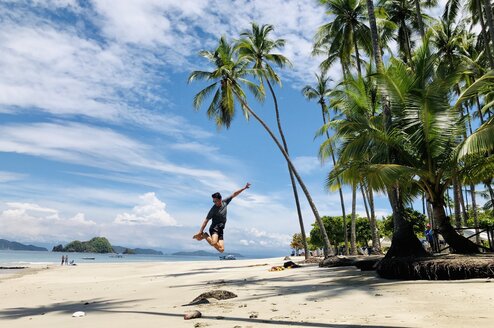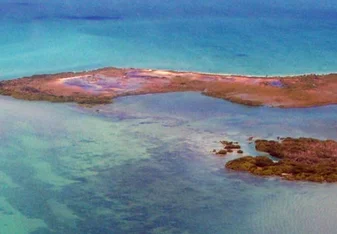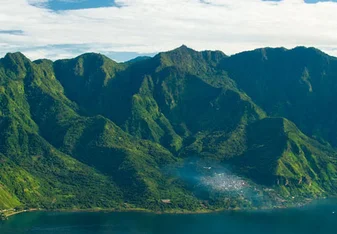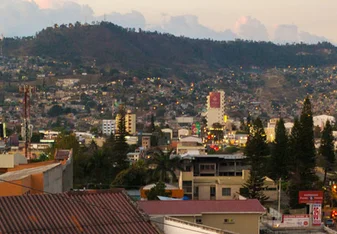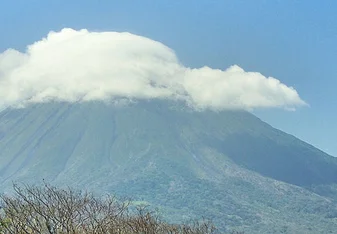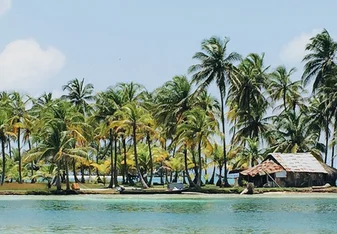Gap Year Programs in Central America
Popular Gap Year Programs in Central America
Pagination
About
There are many preconceived notions of what Central America is like. The best way to combat this? Go explore the region and see for yourself! You’ll likely discover that most people’s perceptions of Central America don’t match reality.
This is a diverse region, so do some research before setting out. For example, according to Numbeo, it costs around US $1,200 a month to rent a one-bedroom apartment in Panama City, compared with US $400 in Guatemala City.
Some things however do hold true throughout the region. Local transportation tends to be cheap and reliable, but sweaty and overcrowded. Some countries, notably Honduras, do have high crime rates but most of the problems are between rival drug gangs and you are unlikely to find trouble unless you look for it. Such diversity in a small area also means you can plan an interesting and rewarding gap year on a lower budget, rather than other areas where you would perhaps have to take more flights. Traveling the length of Central America is totally possible in a year and open-jaw tickets (eg. flying into Belize and out of Panama) are usually about the same price as standard returns.
Types of Programs
In order to decide where to go, it’s best to first decide what you want out of your gap year.
Volunteering
You will be spoiled for choice when it comes to volunteer opportunities, so it’s worth taking some time to sort through your options. Sites such as HelpX.net and wwoof.net are great for finding opportunities to volunteer, with the latter concentrating on organic farms. There is usually a range of options according to whether you are looking to volunteer in an area of experience, adding some value to the program, or if you are offering your labor but hoping to learn new skills as you go. Some programs cover all of your expenses, while others ask for a contribution to cover your food. Either way, you can easily work your way around the region on a shoestring budget.
Language Immersion
There are large parts of the region where English is spoken, but Spanish dominates in most countries and a gap year is an excellent way to immerse yourself and learn a new language. There are many courses and schools featured on GoOverseas, such as the excellent Sol Education in Costa Rica or Maximo Nivel in Antigua Guatemala. Most courses offer options of excursions in the local area and the chance to stay with local families. Many chose to take an intensive course at the beginning of their trip and use the rest of the time to practise as they go.
Sightseeing
The idea of a gap year is, after all, to take a break from work/study. If you just want to unwind, El Salvador has miles of unbroken sandy beaches, and Nicaragua’s Little Corn Island is exactly as you imagine a Caribbean Island with white sand, blue sea, and stunning sunsets.
If you want to get out and about, there’s plenty to see in Central America.
- For wildlife try the jungles and rivers of Nicaragua, the volcanoes of Costa Rica and Belize’s spectacular Barrier Reef.
- For history there’s the historical Mayan ruins of Copán, Honduras and Tikal, Guatemala or the Spanish colonial splendor of Casco Viejo, Panama.
- For a cultural experience, forget Spanish and try the Mayan regions of western Guatemala, the Garífuna of Honduras, or the Rama areas of Nicaragua.
Health & Safety
Health and Safety
The region is generally safe for tourists, as long as you use common sense and avoid being flashy with your money and/or gadgets. Honduras is the place you’ll need to be most on guard, but even there most problems are between rival gangs and are unlikely to affect you.
It’s always a good idea to take out health insurance. Free healthcare is widely available, but standards leave a lot to be desired and you will more likely end up paying to visit a private clinic unless you are in a real emergency. These can be as good as any western facility, but often have a price tag to match. For minor illnesses, such as stomach upsets (which you can expect to get at some point), you can usually get cheap over-the-counter medicine at any pharmacy.
To avoid getting ill in the first place, drink bottled water where possible and only eat fruit and salads if you can be sure they’ve been properly cleaned and disinfected. Wash your hands regularly, especially before eating. Especially in the rainy season (around May-November on the Pacific coast but all-year-round in the Caribbean Region) use mosquito repellent and sleep under a mosquito net.
Planning Your Trip
Visas
While it’s always best to check the specific agreements between your country and the country you are visiting, it’s worth noting that Nicaragua, Honduras, Guatemala and El Salvador have an agreement known as the C-4 which means you just need one visa for all four countries. It also means, however, that if you enter as a tourist you only get 90 days between the four countries before you need to either leave the country (ie cross into Costa Rica or Belize), or apply for a visa extension. In most cases it’s easy to extend your visa for up to a further 90 days. This costs around US$20 per month and can be done at any immigration office. It’s usually easier to take this route than to think about getting residency if you are only going to be staying for a year, but if you do decide to apply for residency be sure to check the requirements before you leave, as you will often need documents such as a police check from your home town.
Cost of Living
Cost of living varies widely across the region, with Nicaragua and Honduras being generally cheaper and Belize and Panama more expensive. Within countries this can also vary depending on whether you are in a city or the countryside and how many western ‘home comforts’ you need.
A gap year in Central America can be far richer and varied than most people ever imagine. Of course there’s no need to stick rigidly to one type of gap year, and in reality most people end up having a mixture of everything. The general weakness of the economies in the region means that food and basics supplies are cheaper than in more developed countries, and your dollars can do a lot of good by supporting local businesses. Taking the time to really get to know a region and culture is a rewarding experience in itself, but it will also enhance any résumé. Just be careful – many people start out here on a gap year and never want to leave!
